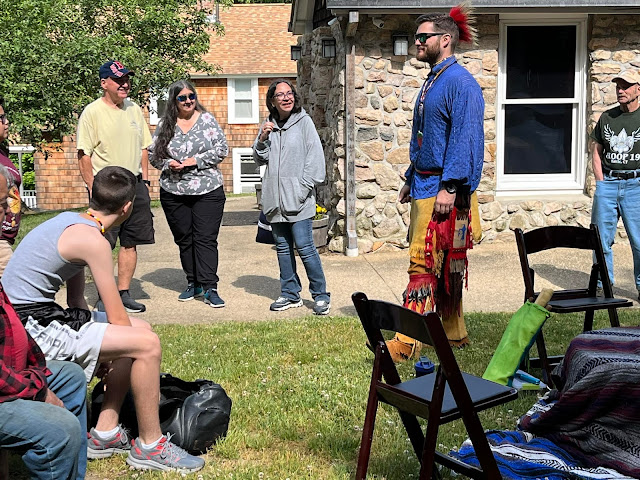Like many indigenous tribes around the world, Native Americans believed in witchcraft and magic. These beliefs were passed down by oral tradition. There were many traditions such as vision quests to gain enlightenment and direction and many dances and ceremonies to honor spirits and ancestors. Historic records show that Algonquian and Iroquois accepted witchcraft as part of their world and would use it to explain disasters.
Many plants were used to ward off witchcraft. Below find five used by different Native American Communities from around the country.
 |
| Fool's Huckleberry |
 |
| The roots of Sweet Flag, an aquatic plant that resembles cat-o-nine-tails |
Sweet Flag is of ancient origins and was used by many Native American communities for magical purposes. The Cheyenne, for example, would tie a piece of Sweet Flag root to a child's clothes to keep the night spirits and ghosts away and the child safe from harm. The Algonquin considered the root a magic charm and carried it to avoid getting sick. The Dakota, Pawnee, Ponca, Winnebago, and Omaha made garlands from the leaves of Sweet Flag and used them in sacred ceremonies. They also made a paste from the roots and rubbed it on a warrior's face to prevent fear. The Iroquois used Sweet Flag to detect bewitchment.
 |
| Limestone Bittercress |
Limestone Bittercress can be found in Connecticut although it is on the endangered list. It has been found to have many health benefits as it is rich in many vitamins and minerals. This perennial was used for other purposes besides health benefits. It was a favorite of the Iroquois, who considered the root to be a valuable medicine and used it as an antidote to counteract all kinds of poison. They also used it ceremonially, to divine a perpetrator of witchcraft.
 |
| The umbrels of Cow Parsnip |
Cow Parsnip cannot be missed with its bright beacon of clusters of white showy flowers. This plant is the only member of the genus Heracleum native to North America and is in the carrot family. It can grow up to ten feet and is found on riverbanks, in forest clearings, and meadows. Although it had many medicinal uses, some Native American communities used it for magic! The Menominee and Ojibwa use this plant as a smudge to drive away evil spirits as well as to drive away bad spirits from the camp of a hunter.
 |
| Roots of the Oyster Plant |
The Oyster Plant is in the Aster family and was originally consumed as a vegetable before it was used medicinally. It is said that its roots have a taste that is similar to oysters. The roots were mostly used to treat digestive problems. The Navajo Ramah, however, had an additional use for the Oyster Plant which they used in ceremonies as an emetic.

_(2)-1.jpg)
_(2).jpg)



.jpg)









.jpg)